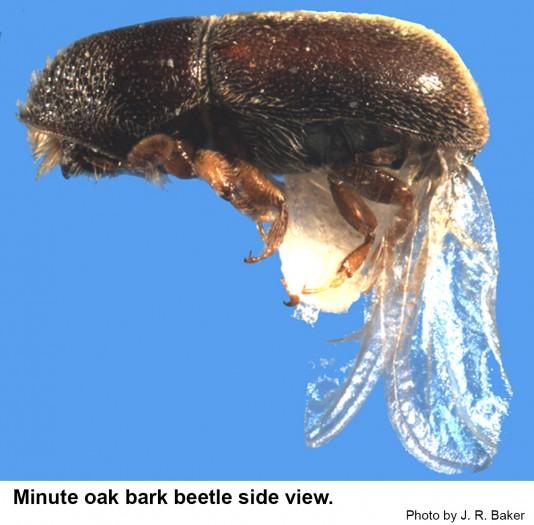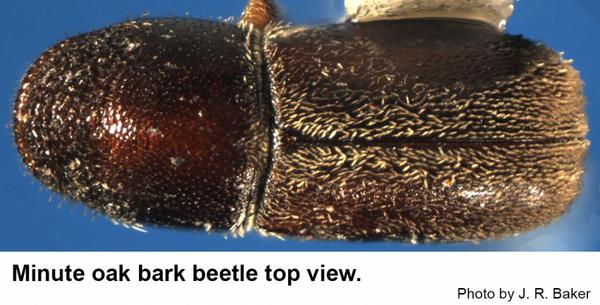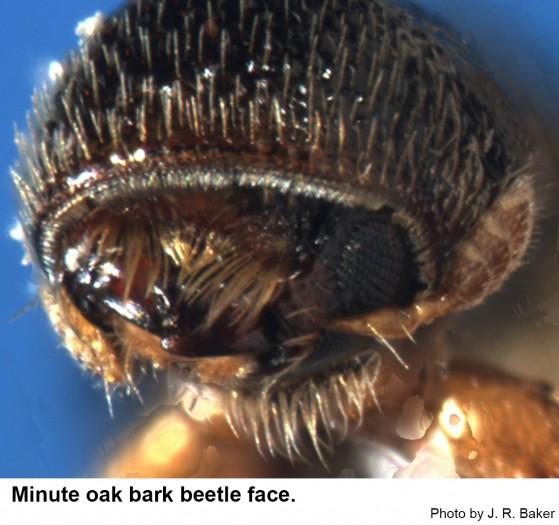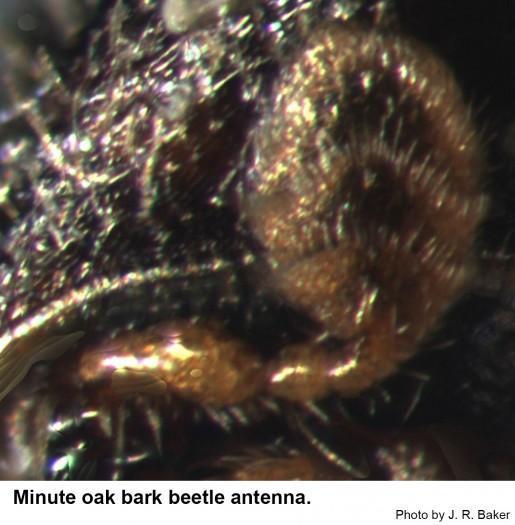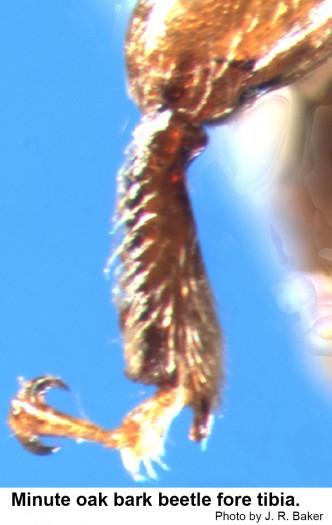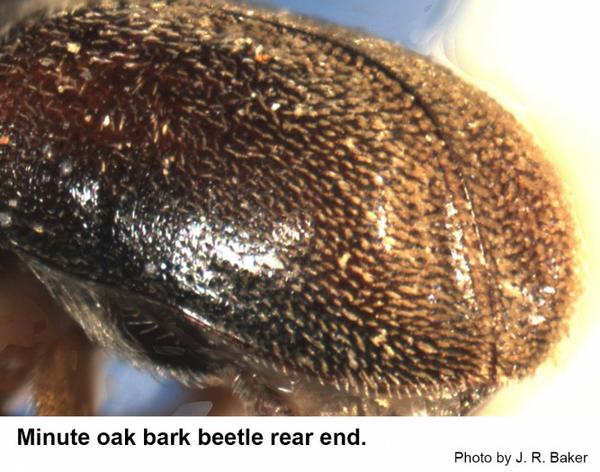Description and Biology
The minute oak bark beetle, Pseudopityophthorus minutissimus, is also called the small oak bark beetle. It is tiny and dark brown. The male bores into the bark and excavates a short tunnel along the grain. He then starts two egg galleries across the grain from the central entrance burrow. By that time he is joined by one or two female beetles that extend the egg galleries. Eggs are laid and the newly hatched larvae mine in the phloem along the grain of the branch. The larvae are tiny, whitish grubs without legs. Minute oak bark beetles attack the branches on living, dying, and felled oak trees in the eastern United Sates. They usually do not infest the thicker bark on the trunk of oaks. The minute oak bark beetle infests trees that are stressed or dying—even dead branches on otherwise healthy oaks.
Host Plants
Oaks seem to be the only host plants of the minute oak beetle. Because the minute oak bark beetle primarily infests stressed, dying or dead branches, it is not a primary pest of oaks. An infestation could be an indication that something else has stressed the tree.
Residential Recommendation
By the time minute oak bark beetles are found in a tree, there is no use in applying an insecticide as the beetles are under the bark and out of reach. Pruning out dead wood, mulching, watering during excessively dry weather, and liming and fertilizing moderately according to a soil test will probably eventually control the beetles far better than applying an insecticide.
References
- An Identification Tool for Bark Beetles of the Southeastern United States. Baker, J.R., J. LaBonte, T. H. Atkinson, and S B. Bambara. 2009. Lucid Key.
- The Bark and Ambrosia Beetles of North and Central America (Coleoptera: Scolytidae), a Taxoniomic Monograph. Wood, Stephen L. 1982. Great Basin Naturalist Memoirs, Vol 6. Brigham Young University, Provo, UT. 1359 pp.
- NC State Extension Plant Pathology Publications
- NC State Horticultural Science Publications
- North Carolina Agricultural Chemicals Manual
For assistance with a specific problem, contact your local N.C. Cooperative Extension center.
This factsheet has not been peer reviewed.
Publication date: Jan. 19, 2013
Reviewed/Revised: May 6, 2023
The use of brand names in this publication does not imply endorsement by NC State University or N.C. A&T State University of the products or services named nor discrimination against similar products or services not mentioned.
N.C. Cooperative Extension prohibits discrimination and harassment regardless of age, color, disability, family and marital status, gender identity, national origin, political beliefs, race, religion, sex (including pregnancy), sexual orientation and veteran status.

